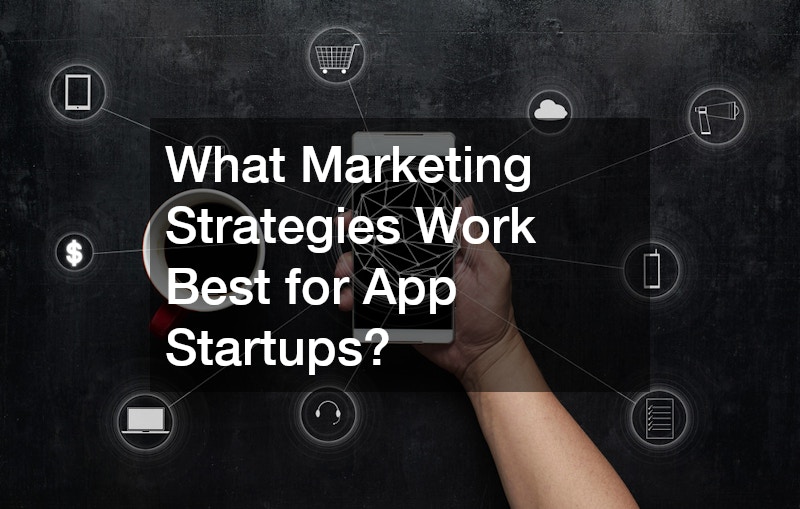

Navigating Startups
Launching an app startup is an exciting venture, filled with innovation, high hopes, and seemingly limitless possibilities. However, what many new founders discover is that the early stages are riddled with unexpected lessons and challenges. Navigating this complex landscape requires more than just a great idea; it demands agility, foresight, and a willingness to adapt quickly.
From design to deployment, and funding to feedback, the early decisions an app startup makes can define its trajectory. A common pitfall is focusing too heavily on development while overlooking crucial elements like branding, legal frameworks, or user experience. Many startups also underestimate the strategic advantage of understanding their market deeply and choosing tools and partners that align with long-term goals.
1. What Role Does User Experience Play in App Success?
User experience (UX) is often the make-or-break factor in an app’s success. A beautifully coded backend is meaningless if users find the interface clunky, confusing, or uninviting. For startups, investing in high-quality web design services early can significantly increase retention and engagement. A clean, intuitive design creates confidence, reduces learning curves, and makes the product more enjoyable.
UX is more than just aesthetics; it’s about functionality, flow, and empathy. Your app should anticipate the needs of users and eliminate friction wherever possible. Think about onboarding — is it clear and helpful, or frustrating and disjointed? Are navigation and actions intuitive? App startups must consider these questions early on. Additionally, usability testing, heatmaps, and user feedback loops should be built into the development cycle. Apps that win often do so by creating experiences that users don’t want to live without.
What many app startups overlook is that UX also directly influences revenue. The smoother the user journey, the higher the likelihood of conversions, in-app purchases, and user referrals. Whether it’s a simple sign-up process or a seamless checkout flow, attention to UX details can dramatically improve key business metrics. Prioritizing user comfort and engagement from the very beginning can lead to long-term loyalty and advocacy.
2. Why is MVP Important in App Development?

Many startups make the mistake of trying to build a full-featured product right out of the gate. In reality, a Minimum Viable Product (MVP) is essential for testing assumptions, gathering feedback, and conserving resources. Starting lean gives you the flexibility to iterate based on what users actually want, not what you assume they need.
Consider how a moving service focuses only on transporting the essentials. Similarly, your MVP should strip down the app to its most valuable function — one that clearly solves a core problem. This lets you validate the idea with minimal investment. It also attracts early adopters who can offer valuable insights. By collecting real usage data, you can improve performance, prioritize the right features, and reduce the risk of building the wrong product. Scaling comes later — first, prove the concept.
An MVP also minimizes time-to-market, helping app startups stay ahead of competitors. The feedback loop it generates allows for agile iteration and real-world learning. If your MVP fails, it’s a cheap failure — one that equips you with the knowledge to pivot quickly and wisely. Startups that master the MVP approach typically have more flexibility and endurance than those who overspend on unvalidated assumptions.
3. How to Choose the Right Technology Stack?
Choosing the wrong tech stack can lead to scalability issues, high maintenance costs, or even a complete rebuild. Startups should align their choices with current needs and future growth potential. This is where participative leadership becomes valuable — involving developers, designers, and even early users in the decision-making process ensures a broader understanding of trade-offs and use cases.
The right stack will depend on factors like your team’s skills, the app’s complexity, expected user load, and budget. For instance, you may choose Flutter or React Native for faster cross-platform development, or opt for native languages if performance is paramount. You’ll also need to consider server infrastructure, data storage, and APIs. Make these decisions early — and wisely — to avoid technical debt later on. Founders who encourage cross-functional collaboration in these choices are more likely to build an app that is both adaptable and resilient.
In addition, your tech stack choices can impact how quickly you can hire new developers or onboard partners. Choosing widely used, well-documented tools can make recruiting easier and reduce long-term maintenance issues. The more adaptable and well-supported your stack is, the less you’ll have to re-engineer when user demand or business direction shifts.
4. What Marketing Strategies Work Best for App Startups?

You can’t rely on “build it and they will come.” App visibility is a challenge, and without a smart marketing strategy, even the best apps can go unnoticed. App startups need to invest in branding, social proof, influencer partnerships, and content creation early on. Your strategy should evolve with your audience, focusing on where they spend their time and how they make decisions.
Just as a business sign directs customers to a store, your marketing efforts should guide users to your app. Consider pre-launch buzz, landing pages, email waitlists, beta testing groups, and social proof like testimonials. Don’t overlook App Store Optimization (ASO), which helps you rank higher in search results. Paid campaigns on social platforms and Google Ads can also help drive early traction. The earlier you begin marketing, the more time you have to test messages, refine your pitch, and build a loyal user base before scaling.
Marketing should also continue after launch — consistent engagement through newsletters, in-app messaging, and user education campaigns helps reduce churn. Data from marketing channels can guide content strategy and help personalize the user experience. Startups that treat marketing as a core function — not a side project — tend to grow faster and retain users longer.
5. How to Secure Funding for Your App Startup?
Raising capital isn’t just about having a cool idea — it’s about proving that your app has potential for growth and profitability. Whether through angel investors, venture capital, or mobile lending, the key is presenting a clear, compelling business case. App startups require a solid business model, revenue projections, user acquisition strategy, and risk mitigation plan.
Before seeking external funding, bootstrap what you can. A functioning MVP and real user feedback make your startup much more appealing to investors. Learn to tailor your pitch depending on the funding source — VCs look for high-growth potential, while government grants and micro-lenders may be more risk-tolerant. Make sure you understand your valuation and the equity you’re offering. Funding isn’t just fuel — it’s a relationship, and misaligned expectations can derail your vision. Choose partners who understand your space and can add value beyond capital.
It’s also critical to prepare for due diligence — ensure your finances, legal structure, and IP protections are well-documented. Start networking early, build relationships with potential investors, and be open to feedback. Sometimes, the best funding comes from non-traditional sources like crowdfunding, startup competitions, or accelerator programs. Stay flexible and resourceful.
6. Why is a Strong Brand Identity Essential for App Startups?

A brand is more than a logo — it’s the emotional connection users make with your app. Developing a consistent visual language, tone, and customer experience from the start sets the foundation for loyalty. People don’t just download apps — they engage with brands that reflect their values and aspirations.
Think of equipment rentals: customers choose providers they trust. Your brand must convey credibility, professionalism, and relevance. A strong brand identity includes your app name, icon, UI theme, typography, and the language you use in emails, push notifications, and social media. Branding also helps unify your internal team, aligning everyone behind a clear mission and story. When done right, a memorable brand builds community, attracts media attention, and makes your app stand out from a sea of competitors.
Don’t wait until growth to define your brand — start early and evolve it strategically. A clear and authentic brand voice helps you communicate consistently across all touchpoints. As your user base grows, a solid brand gives them something to identify with and rally around. This emotional connection becomes a powerful growth engine through word-of-mouth and organic reach.
7. How Do You Build a Scalable App?
Scalability should never be an afterthought. A great app today might crash under tomorrow’s user demand if it wasn’t designed with scale in mind. Learning from industries like insurance agencies, which manage large data volumes and require reliability, startups should build systems that grow seamlessly.
This means designing architecture that can handle traffic spikes, adding caching, separating services with APIs, and choosing databases that allow for horizontal scaling. Cloud providers like AWS and GCP offer scalable hosting environments, but only if configured properly. Also consider your team and process scalability: can your onboarding process handle hundreds of users a day? Can your customer support scale with growth? Prepare for success so you’re not overwhelmed by it.
Beyond technical scalability, you need scalable business processes and team structures. Automate repetitive tasks, document workflows, and use modular design patterns in both code and operations. The more repeatable and resilient your systems are, the easier it is to grow without chaos or burnout.
8. How Do App Startups Effectively Gather and Use Analytics?

Data should drive decisions. Startups that implement analytics tools early — like Mixpanel, Amplitude, or Firebase — gain insights into user behavior, retention, and feature usage. But gathering data isn’t enough; knowing how to interpret it matters. Good analytics help you understand what’s working, what’s failing, and what users care about.
Borrow from the secure shredding industry, which emphasizes data protection and compliance. As you collect more user data, make sure to follow privacy laws like GDPR and CCPA. Also, set up a structured analytics framework with KPIs such as daily active users (DAU), retention rates, and conversion funnels. Use A/B testing to refine UI and onboarding. Data should not just confirm your assumptions — it should challenge them and drive continuous iteration.
Moreover, democratize data access within your team. Product managers, designers, and marketers should all have access to actionable insights. When every team member can see how their work impacts key metrics, it fosters accountability and alignment. Use dashboards and visualizations to make data part of everyday conversations.
9. What Common Legal Challenges Do App Startups Face?
Legal missteps can derail a startup fast. Issues like IP rights, user agreements, GDPR compliance, and trademark disputes are more common than founders expect. Working with a reliable attorney early on can prevent expensive lawsuits or product delays. Many startups overlook legal groundwork until it’s too late.
You need a solid foundation: terms of service, privacy policy, founder agreements, and possibly user-generated content policies. Secure your trademarks and file necessary copyrights. If you’re working with freelancers or third-party developers, get contracts in writing to clarify IP ownership. Legal preparedness also makes your startup more investable — no one wants to fund a company with unclear rights or looming lawsuits. Consider your legal stack as essential as your tech stack.
10. How to Build a Competent and Motivated Team?
No founder can do it alone. Hiring the right people and creating a strong team culture is crucial for app startups. From developers to marketers, every team member should share the startup’s vision. A motivated team is productive, innovative, and resilient when challenges arise.
Take cues from the document shredding business, where every step is done with precision and accountability. Similarly, app startups should operate with clear roles, open communication, and shared accountability. Offer equity, professional development, and regular feedback. Encourage collaboration through agile workflows and transparent leadership. Culture is not just a perk — it’s your long-term differentiator. A cohesive, energized team will outperform larger, fragmented competitors every time.
Carving Out Your Space
App startups operate in a fast-paced, high-stakes environment where early decisions have lasting impact. From understanding the importance of UX and MVPs to navigating legal landmines and building a winning team, these lessons aren’t just helpful — they’re essential.
Founders who learn early, adapt quickly, and invest wisely position themselves for long-term success. By staying informed and intentional, startups can avoid common pitfalls, delight users, and carve out a lasting space in the digital world.


